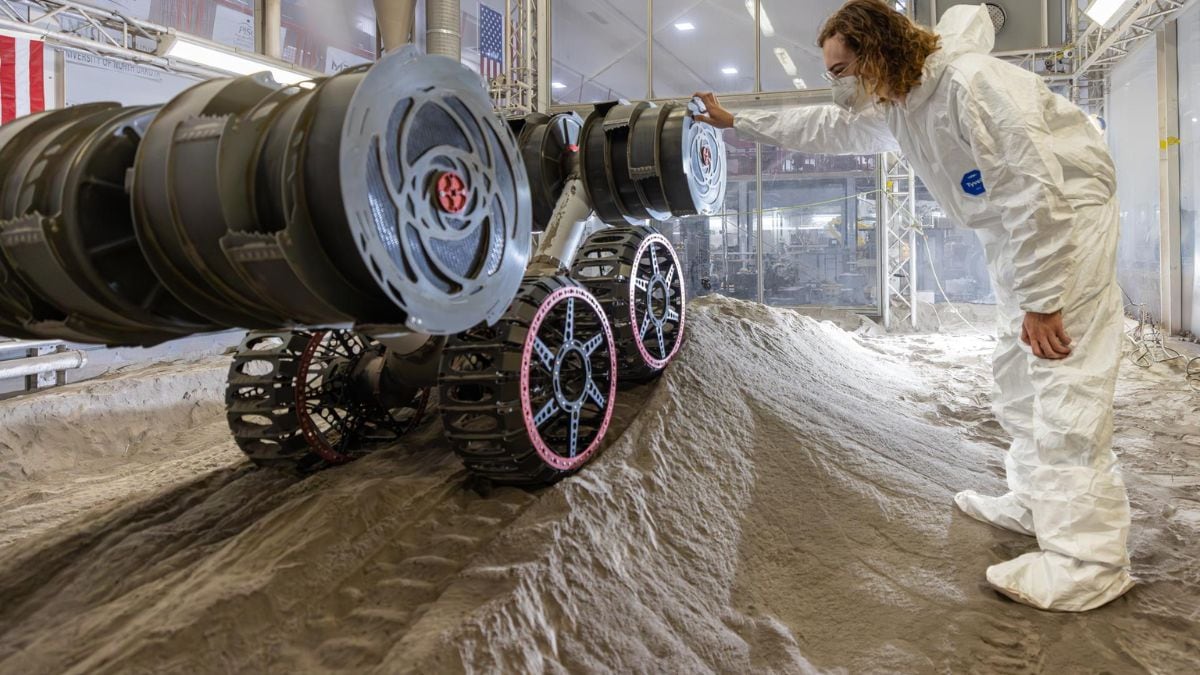
NASA’s RASSOR (Regolith Superior Floor Programs Operations Robotic) was not too long ago examined on simulated lunar soil at Kennedy Area Middle’s Granular Mechanics and Regolith Operations LabThe excavator is constructed to dig and haul Moon-like regolith, making ready expertise for sustained lunar missions. On Could 27, NASA mechanical engineer Ben Burdess noticed RASSOR’s counterrotating bucket drums churn by way of the soil simulant and carve a three-foot berm. This trial focuses on RASSOR’s digging drums and straight informs improvement of NASA’s next-generation Moon-mining excavator, the In-Situ Useful resource Utilization Pilot Excavator (IPEx)
RASSOR’s Counterrotating Drums and Regolith Excavation
In accordance with NASA’s official website, every of RASSOR’s arms carries a bucket drum that spins in the other way of its mate. Engineers word that this opposing rotation provides RASSOR further traction even in weak gravity. Within the Kennedy lab check, these counterrotating drums anchored the robotic into the simulant and successfully dug soil – proof that RASSOR can grip and transfer regolith reliably on the Moon. With that traction, RASSOR can dig, load, haul and dump free soil.
The collected regolith can then be processed into hydrogen, oxygen and water, sources essential to sustaining astronauts on the Moon. In brief, the check confirmed RASSOR successfully excavating lunar soil simulant whereas its drum design demonstrated how future machines can function within the Moon’s low gravity.
Towards the Moon with IPEx Excavator
NASA engineers say this RASSOR check was primarily to test the bucket-drum design slated for the In-Situ Useful resource Utilization Pilot Excavator (IPEx). RASSOR serves as a prototype for IPEx, which will probably be much more autonomous and succesful.
IPEx is engineered as a mixed bulldozer and dump-truck robotic that may mine and transport giant volumes of lunar soil. Finally, IPEx will dig up regolith and feed it into on-site processing items to extract oxygen, water and gasoline from the Moon’s soil. Utilizing these native sources is a cornerstone of NASA’s technique for supporting a sustained human presence on the Moon and finally Mars.
Leave a Reply
You must be logged in to post a comment.